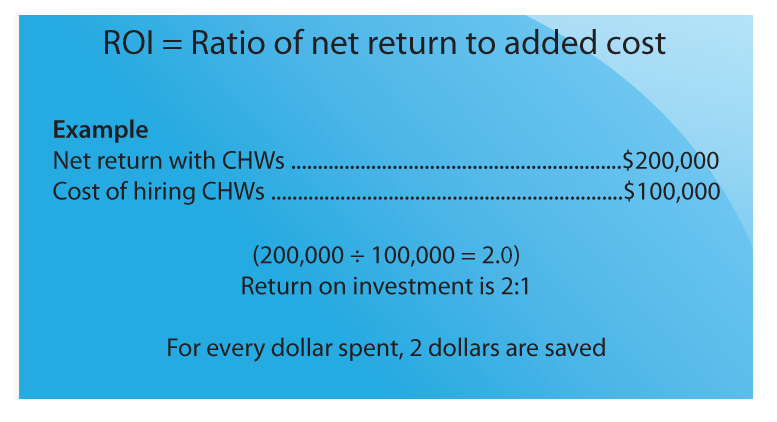ROI
| < Back | Next > |
|---|

View Transcript
[SPEAKER]
Return on investment or ROI, is a more straightforward calculation and appears to be discussed more often, because it is also easier to explain to decision makers. The net return is simply the estimated savings resulting from an intervention (or the estimated increase in a type of revenue) minus the estimated cost of the intervention. To calculate ROI, the net return is divided by the cost of the intervention.
In the example on this slide, net return attributed to employing CHWs is divided by the cost of employing them. If a provider saves $300,000 as a result off the efforts of CHWs, and employing them costs $100,0000, the net return is $300,000 minus $100,000, or $200,000. The return on investment is this net savings—$200,000—divided by the cost of the intervention—$100,000—for a return on investment of 2 to 1. In other words, for every dollar spent, two dollars were saved. The ROI is usually presented as a ratio as shown.
In a real-life example, one Texas-based hospital system calculated return on a CHW initiative to divert emergency department users to more appropriate sources of care. The calculation was based on total cost of care for the identified patients. One region in the system saved more than $16 for every dollar spent on its CHW program.
- Page last reviewed: February 3, 2016
- Page last updated: February 3, 2016
- Content source:



 ShareCompartir
ShareCompartir